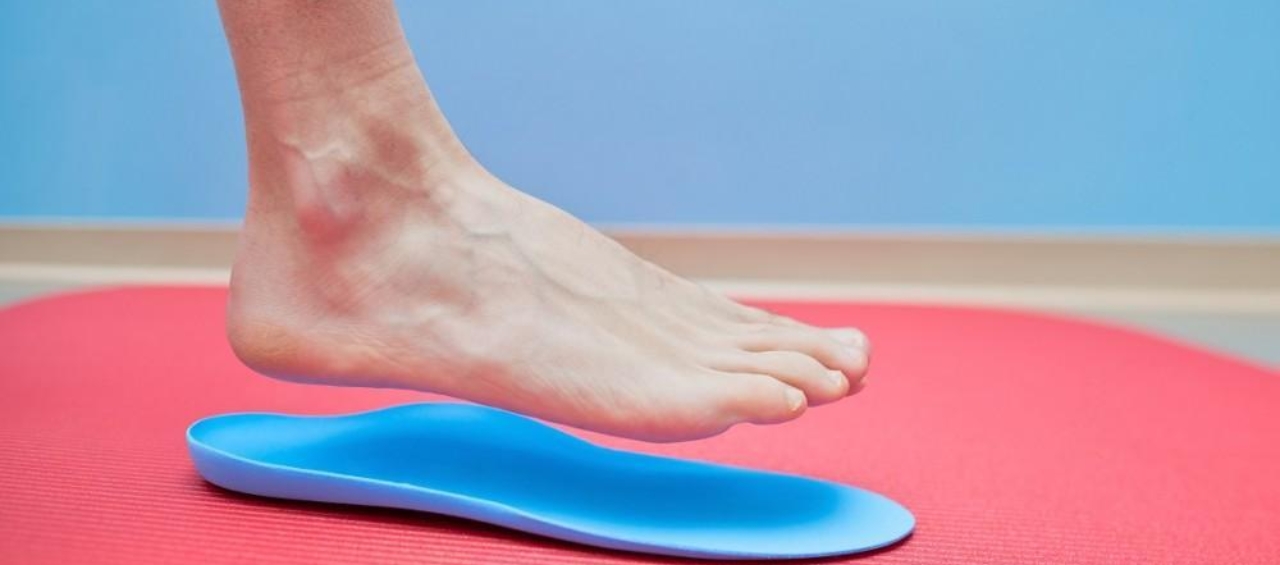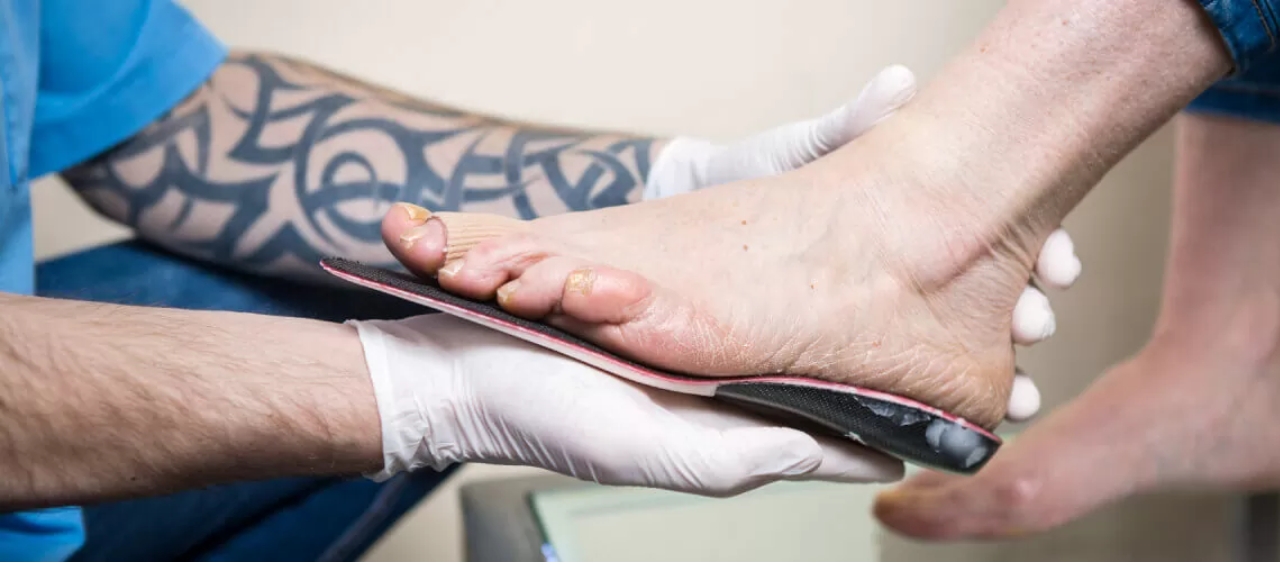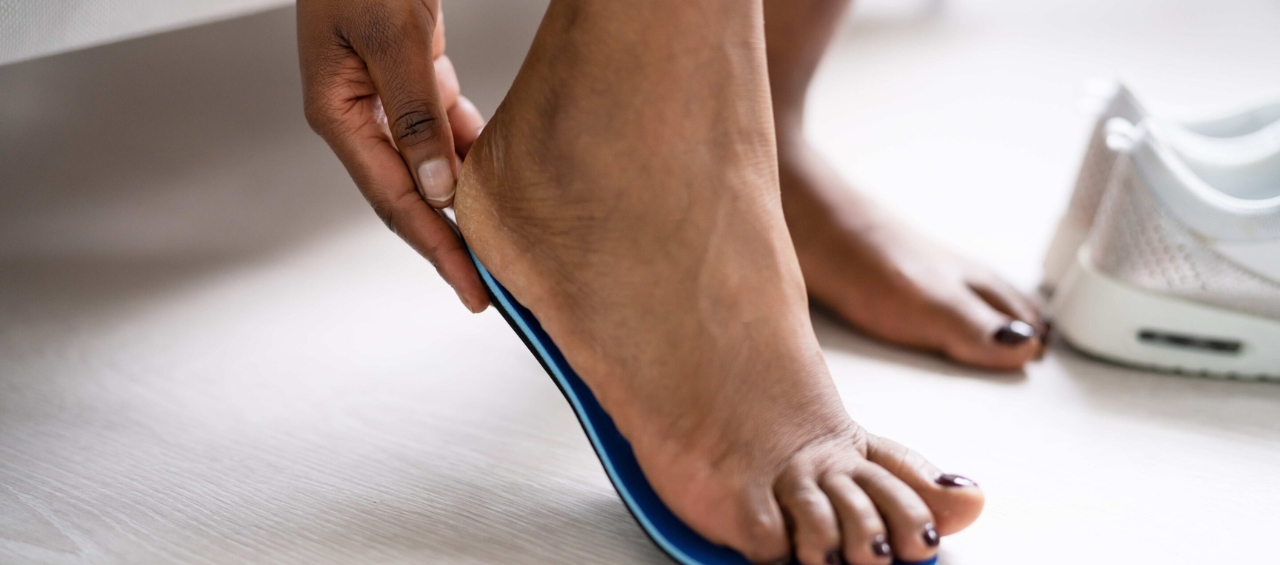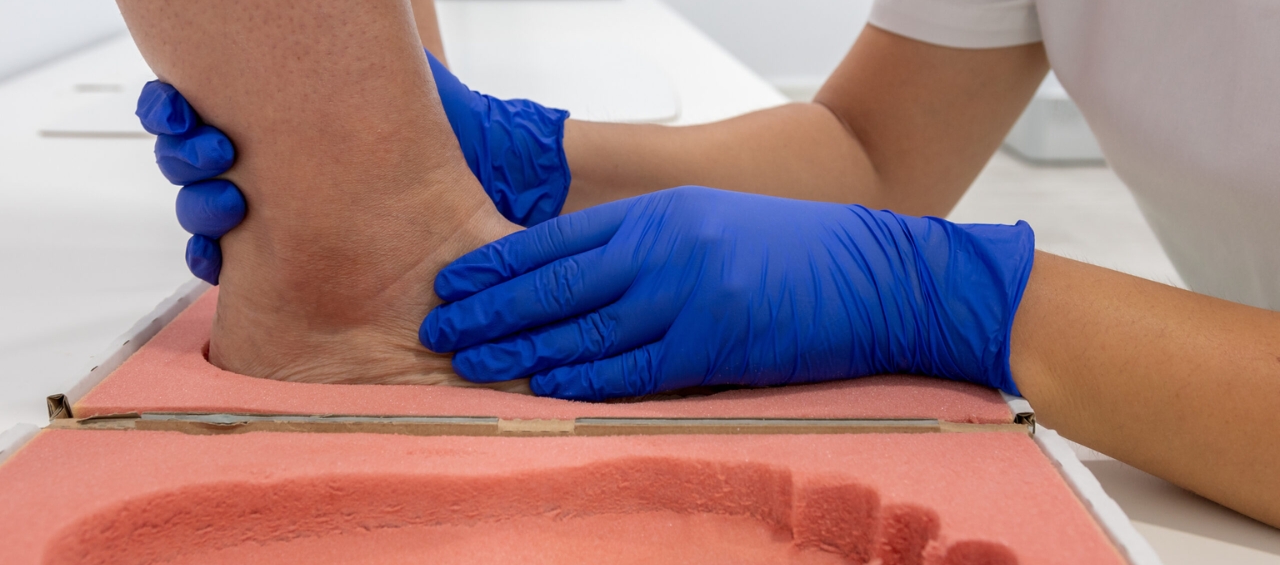Custom orthotics are personalized shoe inserts designed to address various foot issues and improve biomechanical alignment. These orthotics are crafted based on thorough gait analysis and foot examination to tailor them to the specific needs of the individual. The importance of orthotics in foot health cannot be overstated, as they play a crucial role in alleviating pain, correcting abnormalities, and enhancing overall foot function. The purpose of customized orthotics is to provide support, stability, and cushioning where needed, ultimately promoting better posture and reducing the risk of injury. Through meticulous fabrication and intricate design, customized orthotics can enhance the way individuals walk, run, and move, thus empowering them to navigate the digital landscape of modern life with confidence and ease.

Types Of Custom Orthotics
Rigid Orthotics
- Materials Used: Rigid orthotics are typically crafted from durable materials like carbon fiber or hard plastics. These materials provide sturdy support and structure to address various foot conditions effectively.
- Indications For Use: Custom rigid orthotics are recommended for individuals with severe foot deformities, such as significant overpronation or supination, as well as for those requiring substantial biomechanical control during gait.
Indications For Use: Custom rigid orthotics are recommended for individuals with severe foot deformities, such as significant overpronation or supination, as well as for those requiring substantial biomechanical control during gait. - Advantages And Disadvantages: The rigidity of these orthotics offers excellent support for correcting gait abnormalities and redistributing pressure evenly across the foot. However, they may feel bulky and require some getting used to, especially in tighter-fitting shoes.
Soft Orthotics
- Materials Used: Soft orthotics are typically made from cushioning materials like foam or gel, providing gentle support and shock absorption. These materials offer a comfortable fit and are suitable for individuals with sensitive or diabetic feet.
- Indications For Use: Custom soft orthotics are ideal for individuals seeking cushioning and support to alleviate foot pain associated with conditions such as plantar fasciitis or arthritis. They can also provide relief for those with minor gait irregularities.
- Advantages And Disadvantages: Soft orthotics offer superior cushioning and can be comfortably worn for extended periods. However, they may not provide sufficient biomechanical control for severe foot abnormalities and may wear out more quickly compared to rigid orthotics.
Semi-Rigid Orthotics
- Materials Used: Semi-rigid orthotics are crafted from a combination of firm and cushioning materials, such as plastics with added padding or layers of different densities. This combination allows for a balance of support and comfort.
- Indications For Use: Custom semi-rigid orthotics are suitable for individuals with moderate foot deformities or those requiring a balance between support and cushioning. They are often recommended after thorough gait analysis to address specific biomechanical issues.
- Advantages And Disadvantages: Semi-rigid orthotics offer a versatile solution, providing both support and cushioning for various foot conditions. They are generally more comfortable than rigid orthotics while still offering adequate control, although they may not be as durable as rigid options.

Benefits Of Customized Orthotics
- Pain Relief: Custom orthotics offer significant relief from various types of foot pain by providing support and redistributing pressure. By addressing issues like overpronation or supination, they alleviate strain on muscles and joints, reducing discomfort during daily activities or exercise routines. Properly fitted orthotics promote natural alignment, relieve pain, and enhance overall comfort.
- Correction Of Foot Abnormalities: Through precise adjustments tailored to individual foot structure, customized orthotics correct abnormalities such as flat feet, high arches, or misalignments. By providing support and stability, they help restore proper foot function and prevent further deterioration. This correction contributes to improved posture and reduces the risk of developing related conditions.
- Improved Biomechanical Alignment: Customized orthotics optimize biomechanical alignment by addressing gait irregularities identified through comprehensive gait analysis. By supporting the arches, controlling foot motion, and aligning the lower limbs, orthotics enhance efficiency and reduce stress on muscles and joints. This improved alignment promotes smoother movement and reduces fatigue during daily activities.
- Enhanced Athletic Performance: Athletes benefit from customized orthotics designed to support their unique biomechanical needs. By optimizing foot function and alignment, orthotics improve stability, balance, and power transfer during physical activities. This enhancement contributes to improved performance, reduced risk of injuries, and faster recovery times, enabling athletes to reach their full potential.
- Prevention Of Injuries: Custom orthotics play a crucial role in injury prevention by providing support and stability to vulnerable areas of the foot. By correcting biomechanical imbalances and reducing excessive strain on muscles and ligaments, orthotics help prevent common injuries such as plantar fasciitis, shin splints, and stress fractures. This proactive approach to foot health promotes long-term wellness and mobility.
Process Of Obtaining Customized Orthotics
Initial Assessment By A Podiatrist Or Orthopedic Specialist
When seeking customized orthotics, the journey typically begins with an initial assessment by a podiatrist or orthopedic specialist. This crucial step involves a comprehensive evaluation of the patient’s foot health and overall biomechanics. Through dialogue and examination, the specialist gains insights into the individual’s unique needs and concerns regarding their gait and foot structure. This assessment serves as the foundation for developing tailored solutions to address specific issues.
Foot Examination And Analysis
Following the initial assessment, a detailed foot examination and analysis are conducted to further understand the intricacies of the patient’s condition. This process may involve observing the patient’s gait, examining foot posture, assessing joint mobility, and identifying any abnormalities or areas of concern. Gait analysis, in particular, provides valuable information about how the feet function during walking or running, aiding in the customization of orthotic devices to optimize biomechanical alignment and reduce strain on the feet and lower limbs.
Casting Or Digital Scanning Of The Feet
Once the assessment and analysis are complete, the next step in obtaining customized orthotics involves capturing an accurate representation of the patient’s feet. Traditionally, this has been done through casting, where a mold of the foot is created using plaster or foam impression boxes. However, advancements in technology have introduced digital scanning as an alternative method. Digital scanning offers a precise and efficient way to capture detailed foot measurements, allowing for the creation of orthotic devices that are perfectly tailored to the individual’s foot anatomy.

Design And Fabrication Of Orthotics
With the foot measurements obtained, the design and fabrication of custom orthotics can begin. Utilizing advanced software and manufacturing techniques, orthotic specialists create a personalized orthotic device that addresses the specific needs identified during the assessment process. The design phase involves incorporating features such as arch support, cushioning, and corrective elements to optimize foot function and alleviate symptoms. Once the design is finalized, the orthotics are fabricated using high-quality materials chosen for their durability, flexibility, and therapeutic properties.
Fitting And Adjustments
The final stage of obtaining customized orthotics involves fitting the devices to the patient’s feet and making any necessary adjustments to ensure optimal comfort and effectiveness. During the fitting appointment, the patient tries on the orthotics while standing, walking, or performing other relevant activities to assess their fit and functionality. The orthotic specialist may make minor modifications or refinements to the devices based on feedback from the patient and further observation of their gait. This iterative process ensures that the customized orthotics provide the desired support and relief, empowering the individual to move with confidence and comfort.
Conditions Treated With Custom Orthotics
- Plantar Fasciitis: Customized orthotics are highly effective in treating plantar fasciitis, a common condition characterized by inflammation of the plantar fascia. Through gait analysis and foot examination, orthotics tailor orthotics to alleviate pressure on the affected area, providing support and cushioning to promote healing and alleviate pain.
- Flat Feet: Individuals with flat feet often experience discomfort and instability due to the lack of arch support. Customized orthotics address this issue by providing tailored support to the arch, redistributing pressure evenly across the foot. Gait analysis helps orthotics designers design orthotics that correct biomechanical imbalances and enhance comfort while walking and standing.
- High Arches: High arches can lead to excessive pressure on certain areas of the foot, causing pain and discomfort. Customized orthotics for high arches are designed to provide cushioning and support where it’s needed most. Through gait analysis, orthotics determine the optimal level of support to promote proper alignment and alleviate strain.
- Bunions: Bunions are bony bumps that develop at the base of the big toe, often causing pain and discomfort. Custom orthotics can help alleviate pressure on the affected area by redistributing weight and providing cushioning. Gait analysis aids in designing orthotics that accommodate the unique foot structure and minimize friction and irritation.
- Achilles Tendonitis: Achilles tendonitis is inflammation of the Achilles tendon, commonly caused by overuse or improper footwear. customized orthotics can help address underlying biomechanical issues that contribute to tendon strain. Through gait analysis, orthotists design orthotics that provide support and stability to the foot, reducing tension on the Achilles tendon during movement.
- Neuromas: Neuromas are painful conditions caused by the thickening of nerve tissue between the toes, often resulting in sharp, shooting pain. Customized orthotics can help alleviate pressure on the affected area by providing cushioning and support. Gait analysis assists orthotics in designing orthotics that reduce friction and compression on the nerves, alleviate symptoms, and promote comfort.
Maintenance And Care Of Customized Orthotics
Proper maintenance and care are essential to ensuring the longevity and effectiveness of custom orthotics. Cleaning instructions for customized orthotics involve gently wiping them with a damp cloth and mild soap to remove any dirt or debris, being careful not to submerge them in water. Regular inspection for wear and tear is crucial, especially after prolonged use or intense physical activity, to identify any signs of deterioration and address them promptly. A replacement schedule should be established based on factors such as usage frequency and the individual’s gait analysis to ensure optimal performance and comfort. When not in use, customized orthotics should be stored in a clean, dry place away from direct sunlight and extreme temperatures to prevent damage. By adhering to these maintenance guidelines, individuals can prolong the lifespan of their customized orthotics and continue to benefit from their tailored support and alignment.

Conclusion
In conclusion, the significance of custom orthotics cannot be overstated. Through meticulous gait analysis and examination, customized orthotics provide tailored solutions to address various foot conditions, ranging from plantar fasciitis to neuromas. Seeking professional advice from podiatrists or orthopedic specialists ensures that individuals receive orthotics that are intricately designed to enhance biomechanical alignment and alleviate pain. Looking ahead, future developments in orthotic technology promise to further empower individuals by leveraging advancements in the digital landscape to create more robust and swift solutions. As technology continues to evolve, customized orthotics will remain an elegant and effective means of improving foot health and overall well-being.
Experience the difference with Ridgefield Chiropractic & Wellness Center’s custom orthotics near me. Say goodbye to foot pain and discomfort—schedule your consultation today for personalized relief and support!
